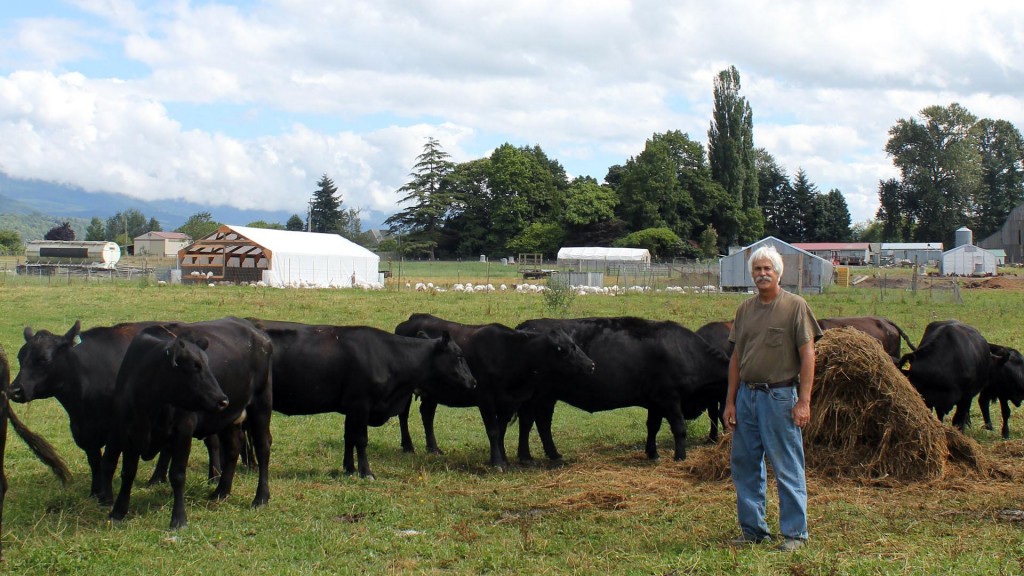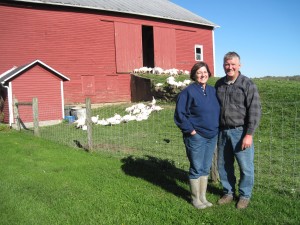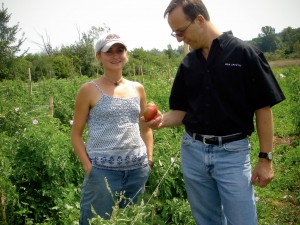
Choosing food grown nearby can have a profound impact on your tastebuds, your health, and your community. Local food is such a “foodie” fad now, it’s easy to forget all the other social and economic reasons why it is such an important movement:
- Better taste: Food grown in your own community was probably picked within the past day or two. It’s crisp, sweet and loaded with flavor. Several studies have shown that supermarket produce travels an average of 1,500 miles from farm to plate. In a week-long (or more) delay from harvest to dinner table, sugars turn to starches, plant cells shrink, and produce loses its vitality and flavor.
- More nutritious: Fresh produce is highest in nutrients just after harvest; it then begins to lose nutrients quickly. Food that is frozen or canned soon after harvest is actually more nutritious than some “fresh” produce that has been on the truck or supermarket shelf for a week.
- Encourages bio-diversity: In the modern industrial agricultural system, varieties are chosen for their ability to ripen simultaneously and withstand harvesting equipment; for a tough skin that can survive packing and shipping; and for an ability to have a long shelf life in the store. Local farms, in contrast, grow a huge number of varieties to provide the best flavors, a long season of harvest, and an array of eye-catching colors.

- Supports local farm families: With fewer than one million Americans now claiming farming as their primary occupation, farmers are a vanishing breed. And no wonder – the farmer now gets less than 10 cents of the retail food dollar. When you buy direct from the farmer, you are re-establishing a time-honored connection. Knowing local farmers gives you insight into the seasons, the weather, and the miracle of raising food.
- Preserves open space: As the value of direct-marketed fruits and vegetables increases, selling farmland for development becomes less likely. You have probably enjoyed driving out into the country and appreciated the lush fields of crops, the meadows full of wildflowers, the picturesque red barns. That landscape will survive only as long as farms are financially viable.
- Supports the local economy: Farms contribute more in taxes than they require in services, whereas suburban development costs more than it generates in taxes, according to several studies.
- Protects the environment and benefits wildlife: A well-managed family farm is a place where the resources of fertile soil and clean water are valued. Good stewards of the land grow cover crops to prevent erosion and replace nutrients used by their crops. Cover crops also capture carbon emissions and help combat global warming. In addition, the patchwork of fields, meadows, woods, ponds and buildings is the perfect environment for many beloved species of wildlife.
What BAMCO is doing

Way back in 1999, we launched a companywide commitment to buying locally, called Farm to Fork. Our chefs strive to purchase at least 20 percent of their ingredients from small (under $5 million in sales), owner-operated farms and ranches located within 150 miles of their kitchens. In 2014, we celebrated Farm to Fork’s 15th anniversary by giving back to 10 of those farms.
See who we’re supporting in your area >
By buying directly from farmers, we have much more control over what types of agribusiness we are supporting. We seek out true family farms where the owners live on or nearby the land, work it themselves and therefore are conscientious stewards, who don’t rely on pesticides, hormones, antibiotics, and genetically modified seeds. We honor their ingredients by preparing and serving them within 48 hours of harvest.
Bon Appétit now spends tens of millions of dollars per year with our more than 1,200 Farm to Fork partners. (We’ve also helped start dozens of farms on our university and corporate campuses, which then become Farm to Fork partners!) In 2011, we defined a new mid-size category for regional meat producers, and also launched a companion seafood program, called Fish to Fork. In order to support truly local, small-scale, and environmentally responsible fishing and aquaculture, we set requirements for traceability, size of boat or aquaculture operation, distance-at-sea limits for wild fish, and distance from the dock or farm distribution radius from Bon Appétit kitchens.
We believe supporting local food is the best bet for creating a more resilient, healthy, and sustainable food system that will benefit all Americans, not just our customers.
Learn more
- Find a farmers’ market or CSA: Local Harvest
- The USDA’s Know Your Farmer, Know Your Food program
- American Farmland Trust